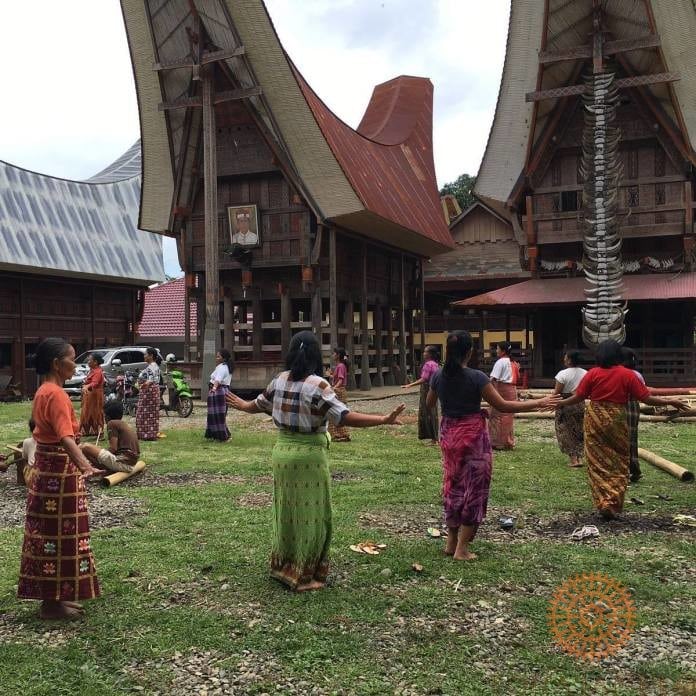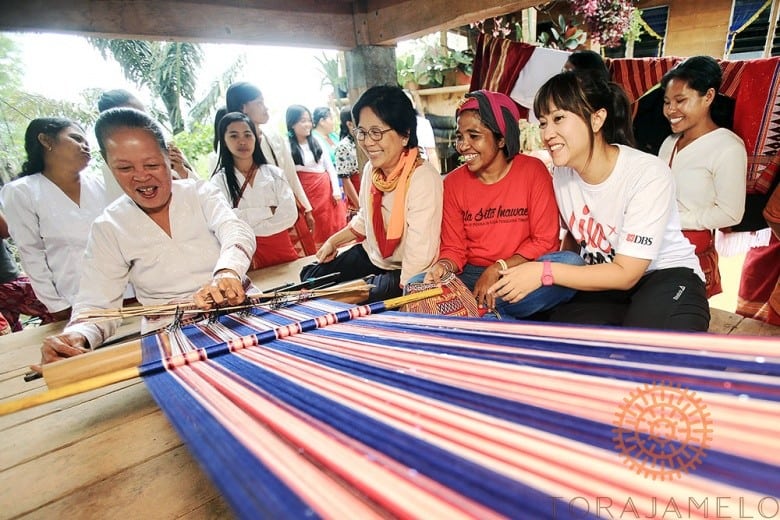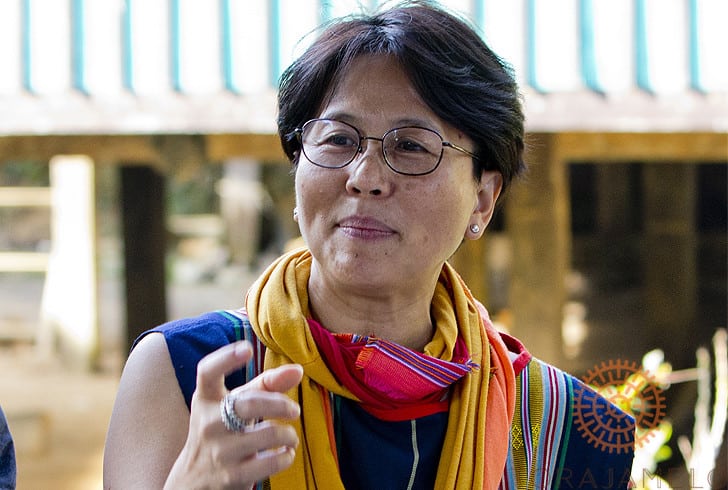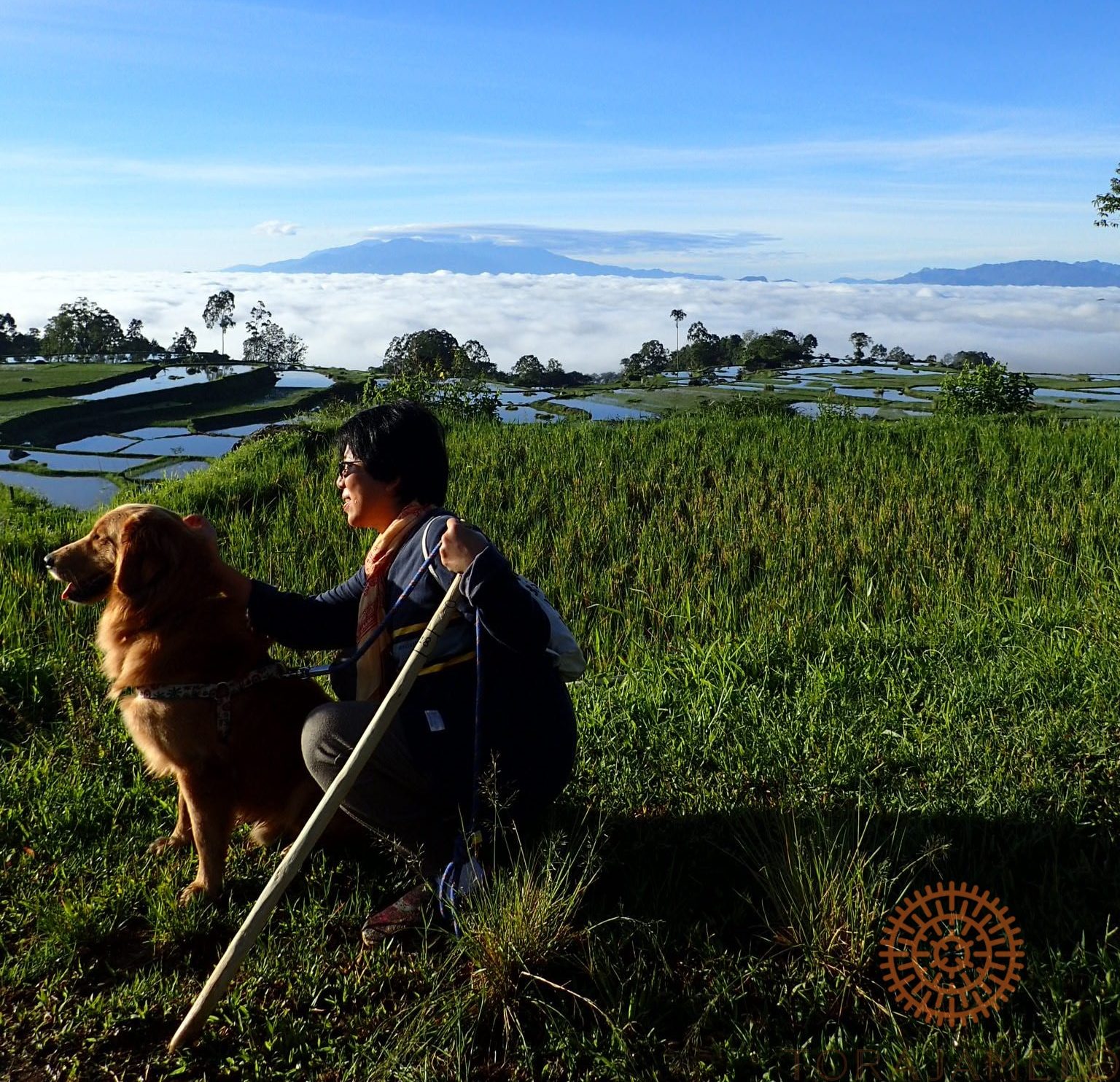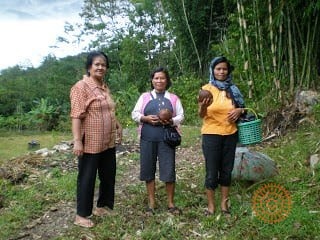
Pamarassan Or The Black Powder Of Toraja
By : admin | June 28, 2018STORY OF
KELUWEK OR KEPAYANG OR PAMARASSAN OR PANGI
OR RAWON OR PANGIUM EDULE
IN TORAJA
One of my daughter Rani’s favourite food is meat and rawon soup. It’s oily, black in colour but tastes yummy. I have always wondered what the tree of the keluwek seed that gives the black colour looks like. So, last week I went with two ladies who sell the keluwek powder in Rantepao morning market to their village in Sangalla’ Tondokiring, near Makale, South Toraja.
I was surprised to see that the tree is tall and that the fruit is almost as big as a coconut! I used to think that the fruit would be small, because the keluwek seed is only around 5 cm in diameter. Apparently, inside the fruit there are many seeds, a bit like durian or jack fruit. The tree bears fruit twice a year around February and August.
The fruit consists of an outer skin (can be used for natural fertilizer or fire wood), the meat called pangi (after being cut up and dried in the sun, it can be used as vegetable in soup), the skin of the seed is called kaloko (according to the Torajanese it’sthe best part, after being dried can also be used as vegetable), the hard skin of the seed (can be used as fire wood), lastly in the middle is the center bit of the seed or keluwek or pamarassan.
This center bit is then cut up and left in the sun for about 2 or 3 days. Afterwards, some water is added in and the mixture is left overnight. The next day it’s left in the sun again until it’s fully dry. Again, it’s pounded into coffee powder like fineness and it’s ready to be sold. Or alternatively some water is again added in, then the ladies shape the powder into little balls. At the moment the approximate price of pamarassan balls is Rp2,000/each, the fine powder is Rp40,000/litre, kaloko Rp10,000/litre and pangi is Rp5,000/litre.
This process is different from the Javanese way. Over there, the seeds are boiled, then they are dried in the sun for about three weeks. Then they are ready to be sold in the market. Before cooking, people will simply open the dried seeds to take out the center bit. The pamarassan or keluwek combined with fish or pork or buffalo or beef meat can make a delicious soup. In Toraja, the young leaves are cut up and cooked in bamboo with pork. The tree trunk can be used as fire wood. So, every part of the tree is useful.
One caution, though, the raw seed contains cyanide acid. It’s only safe to be eaten once boiled or soaked in water. Long time ago, people used to put the poison on arrows to kill their enemies! There is also a saying in Indonesian ‘mabuk kepayang’ (drunk after eating kepayang), which describes somebody who is madly in love and cannot think logically.*
Please see the photos in:
http://picasaweb.google.com/torajamelo
*from Wikipedia
